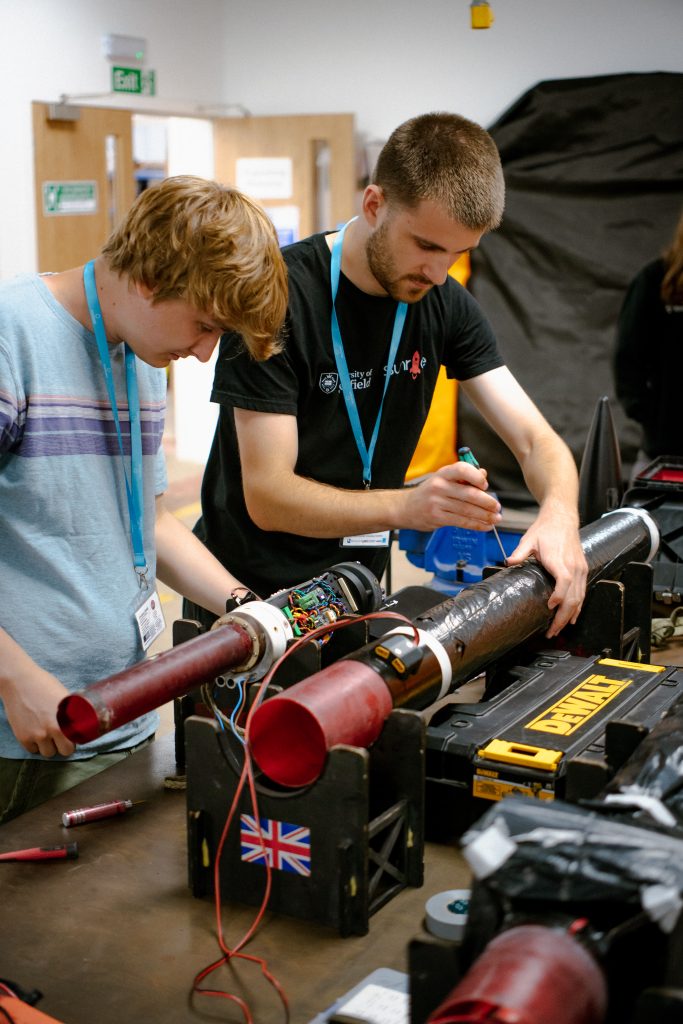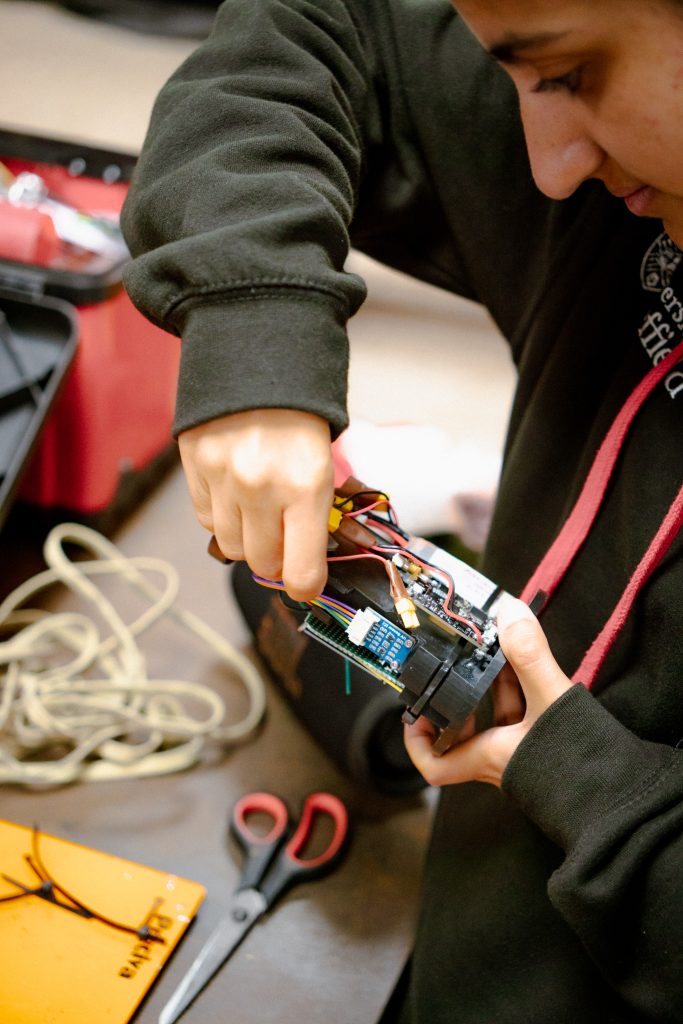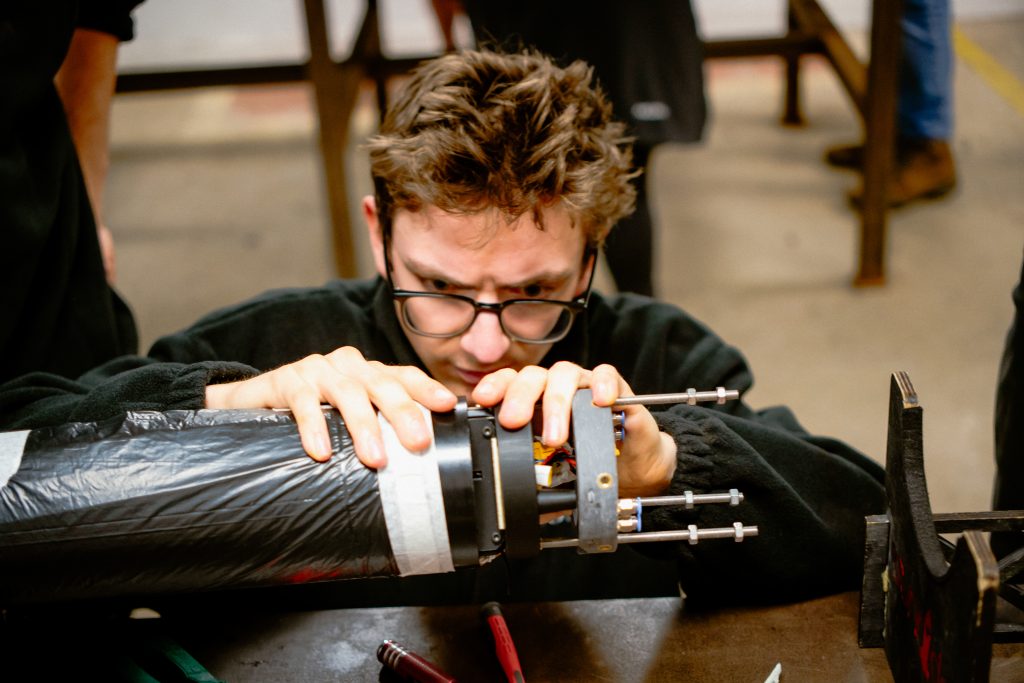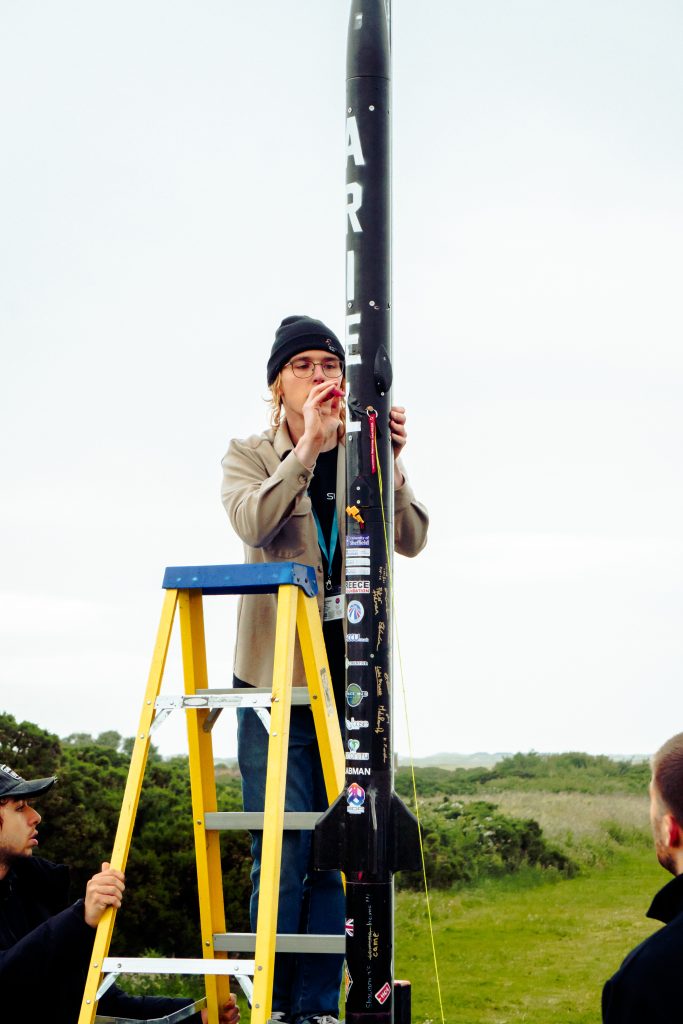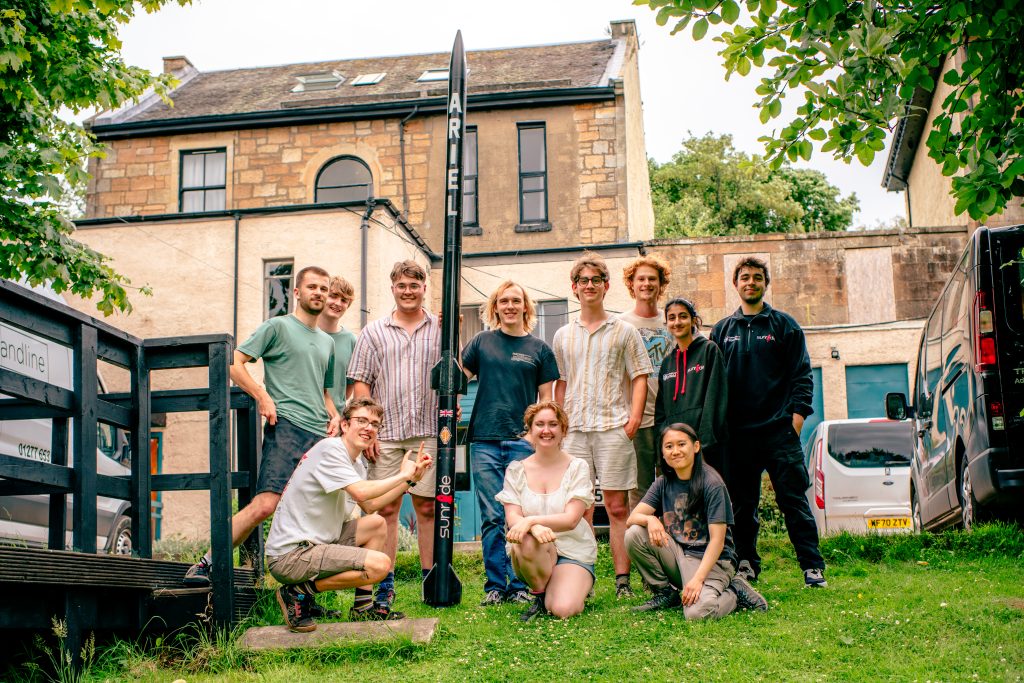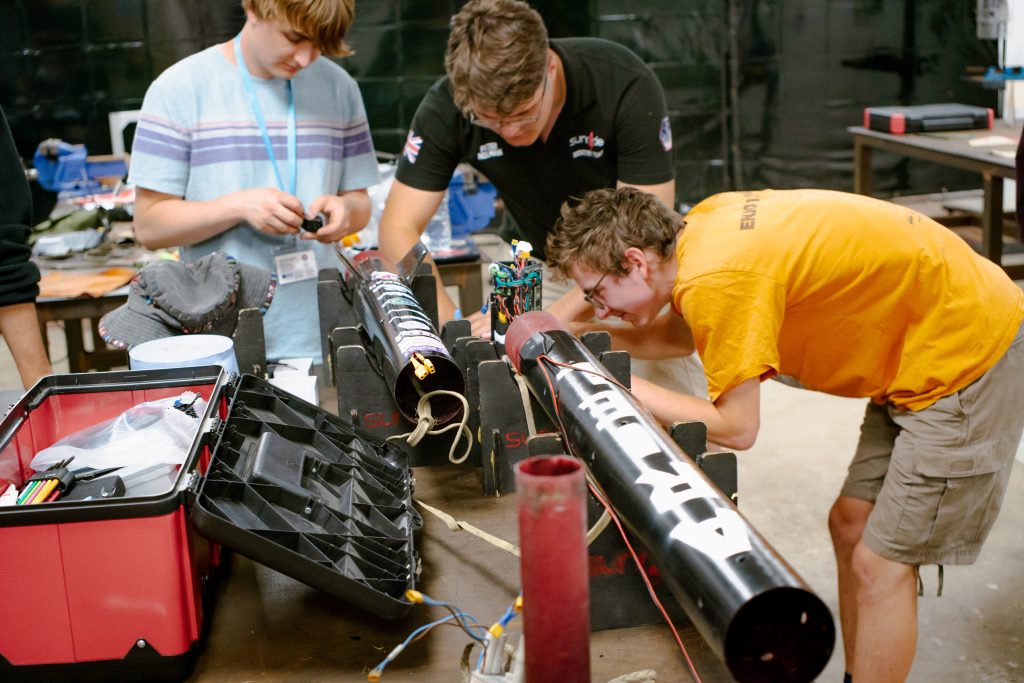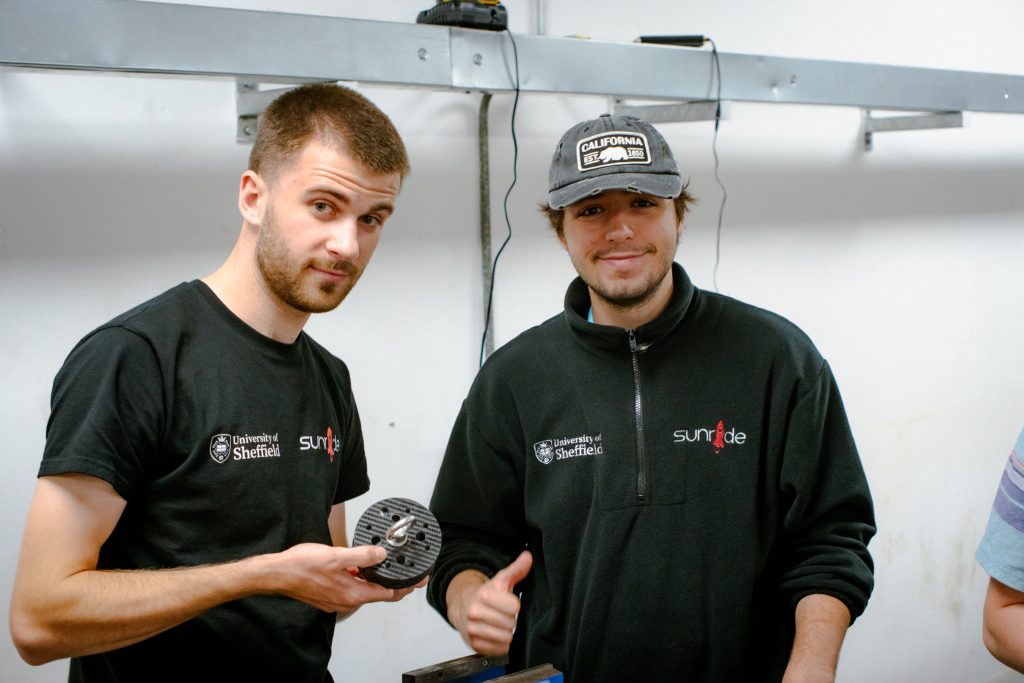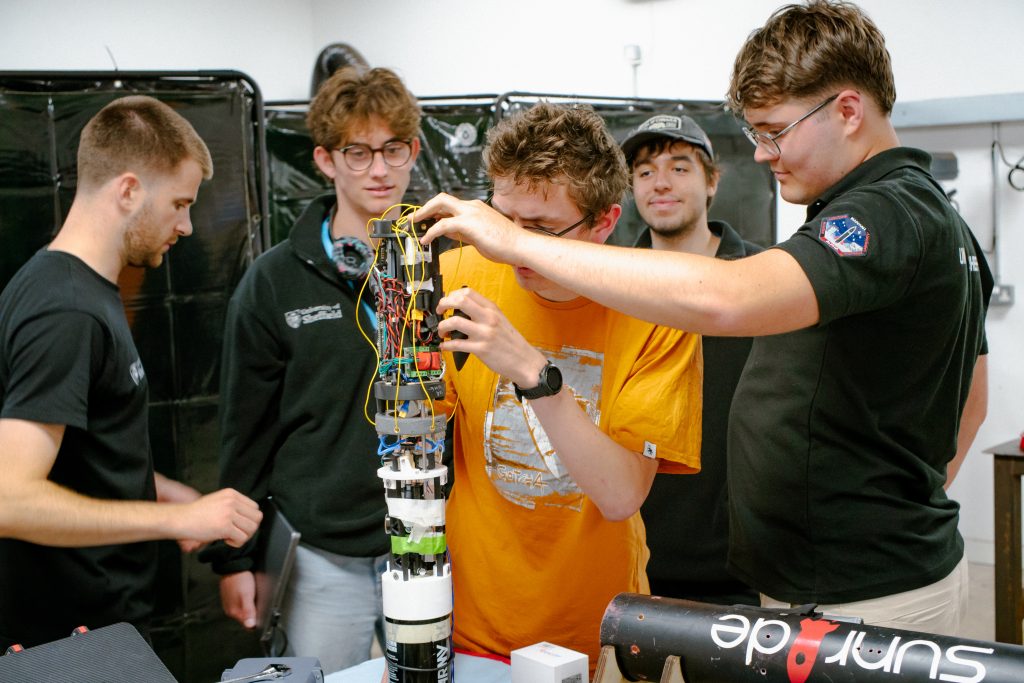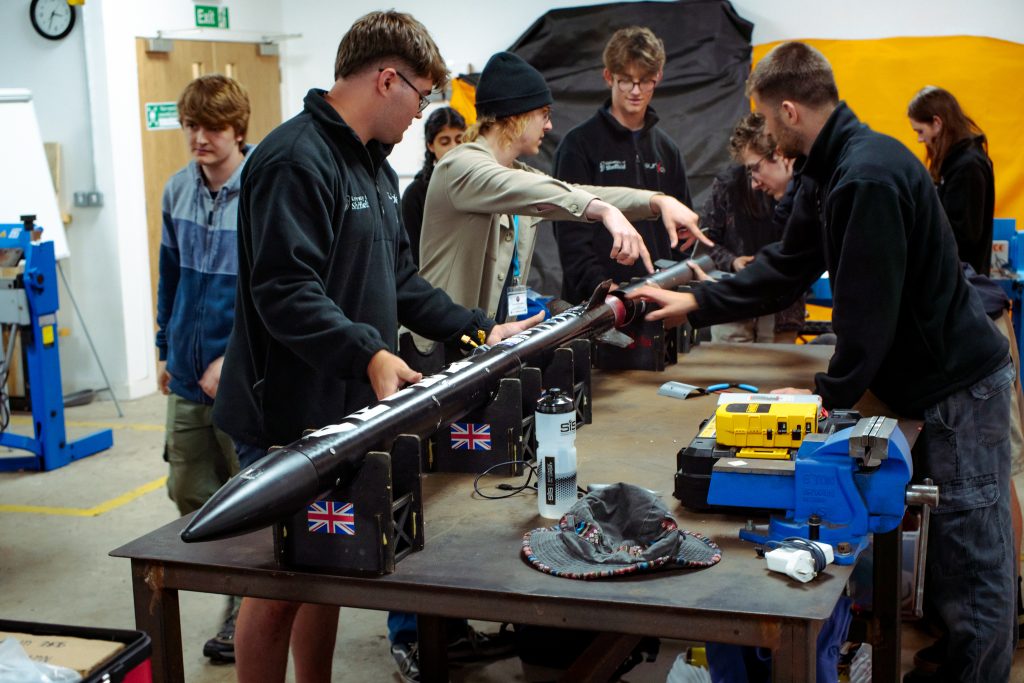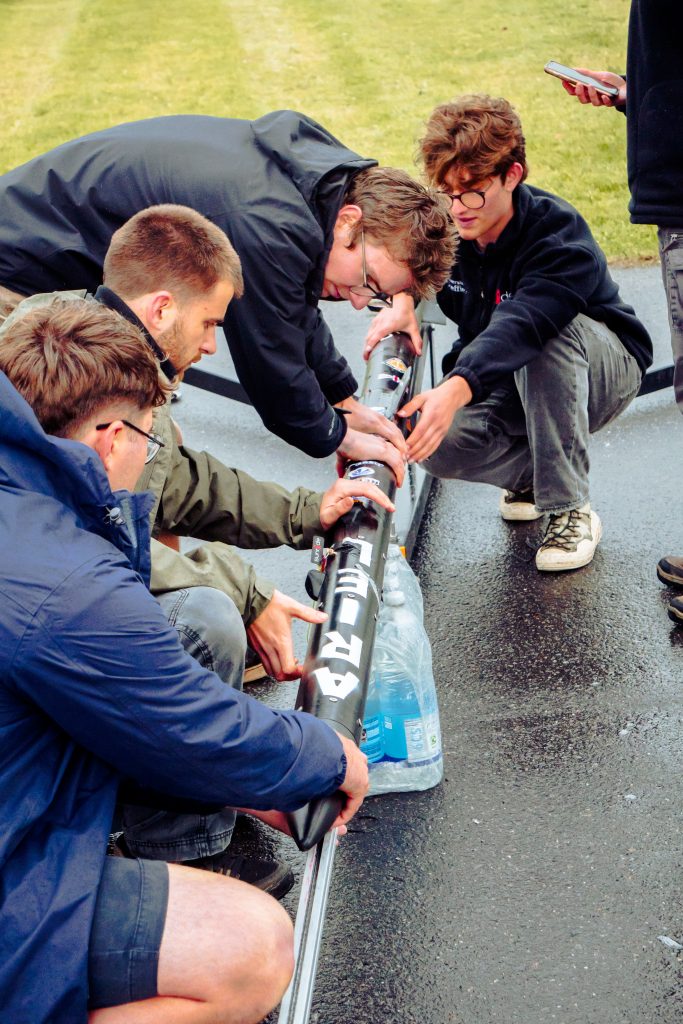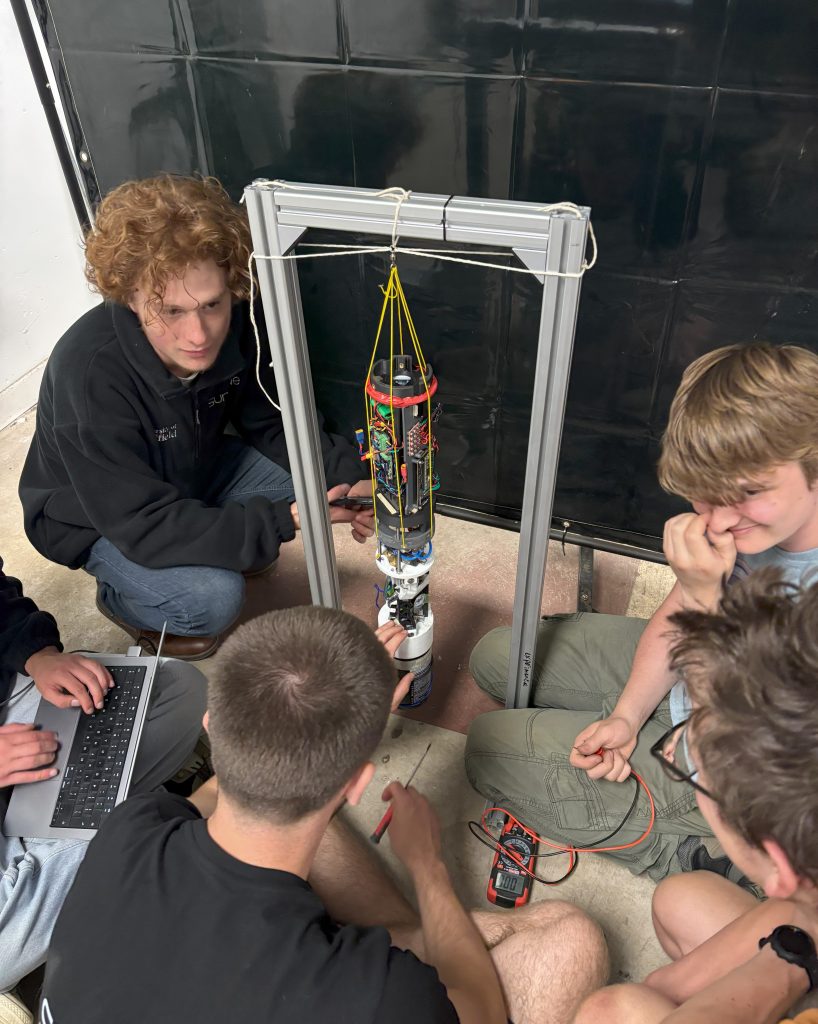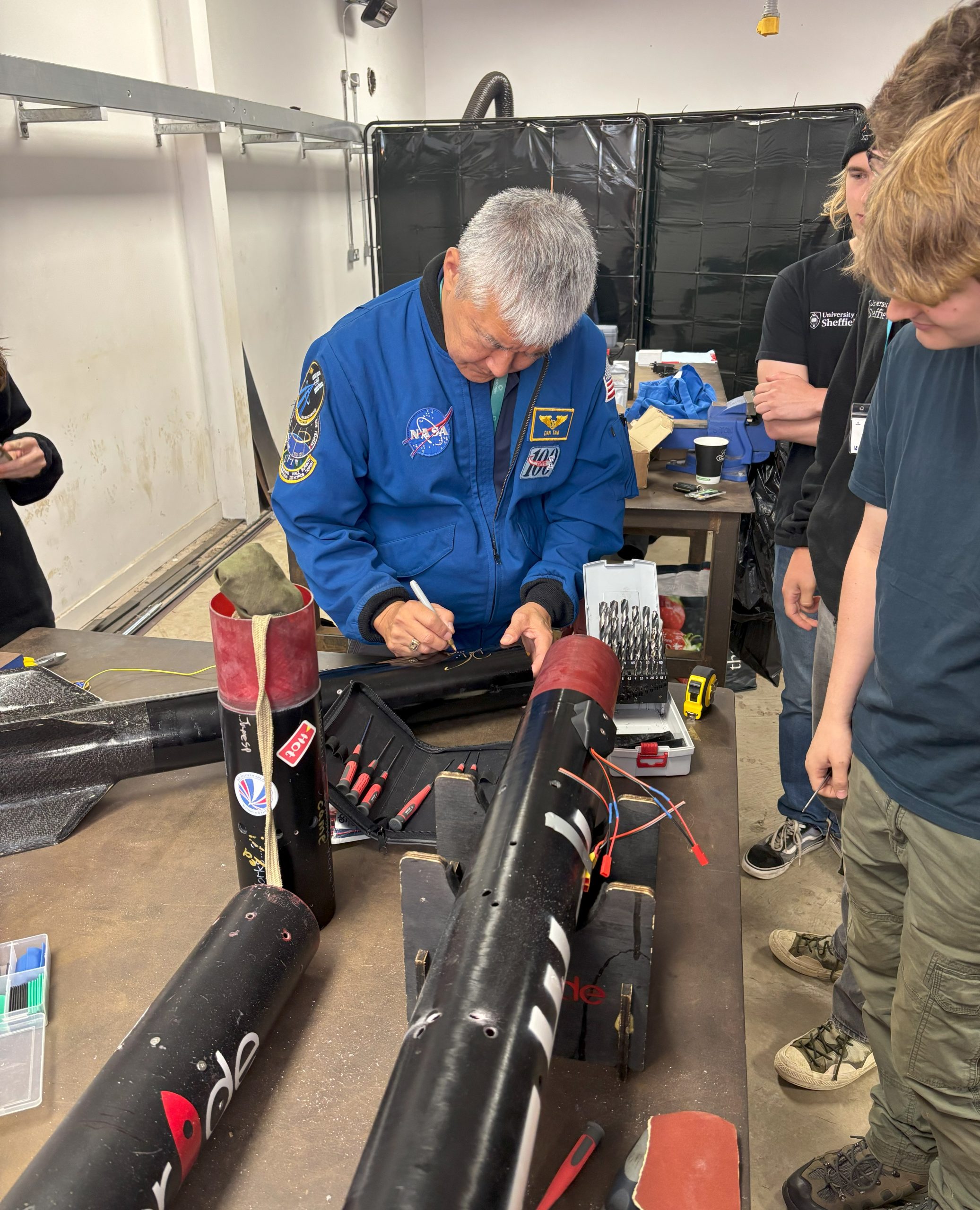ARIEL
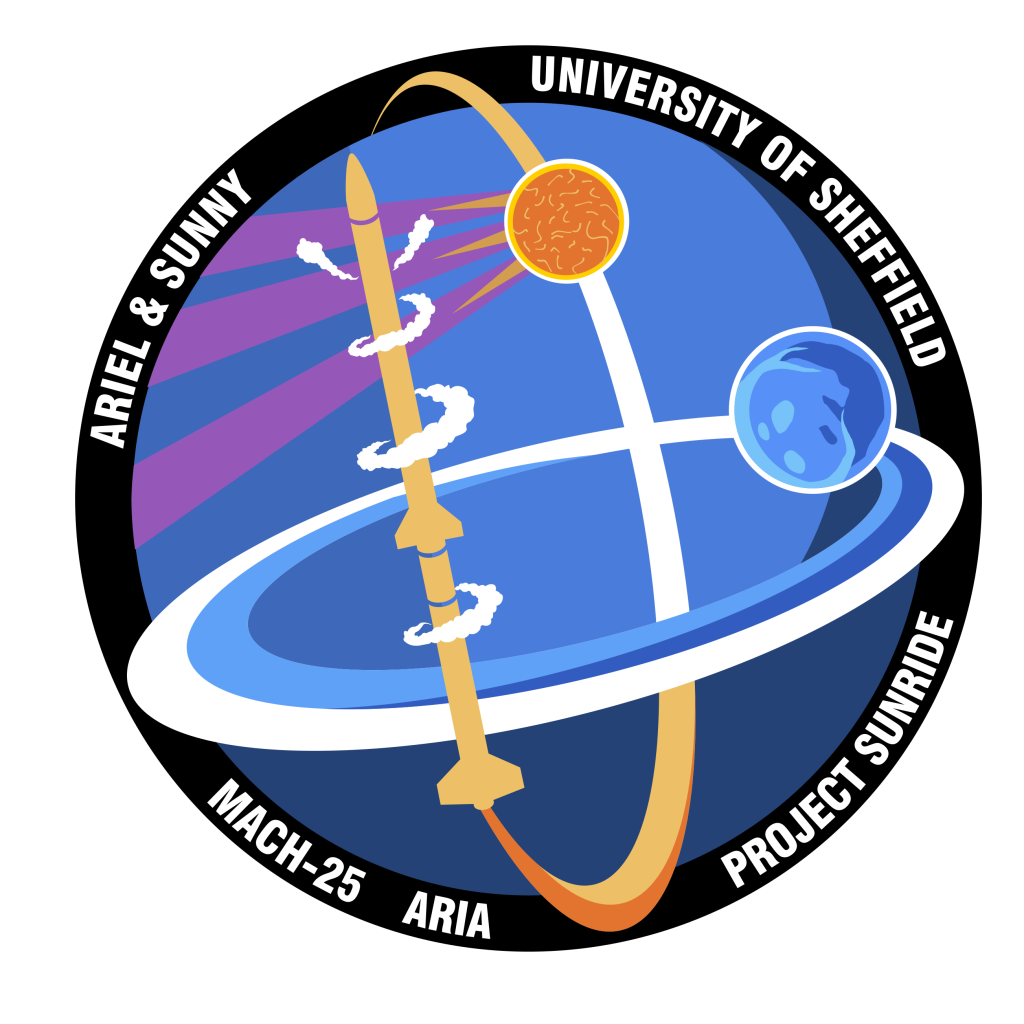
About
Ariel was Project Sunride’s entry to Mach-25, a rocketry competition that takes place every summer in Machrihanish, Scotland.
This two-stage rocket aimed to compete in the Experimental Category of the competition and featured both a roll control system utilising CO2 cold gas thrusters, and Sunny – a climate payload measuring UV intensity at altitude as part of the Launch 4 Change programme’s pilot year.
The main goals for Ariel are to control its roll during the second stage coast, collect UV light data during ascent, and to successfully launch and recover both stages of the rocket.
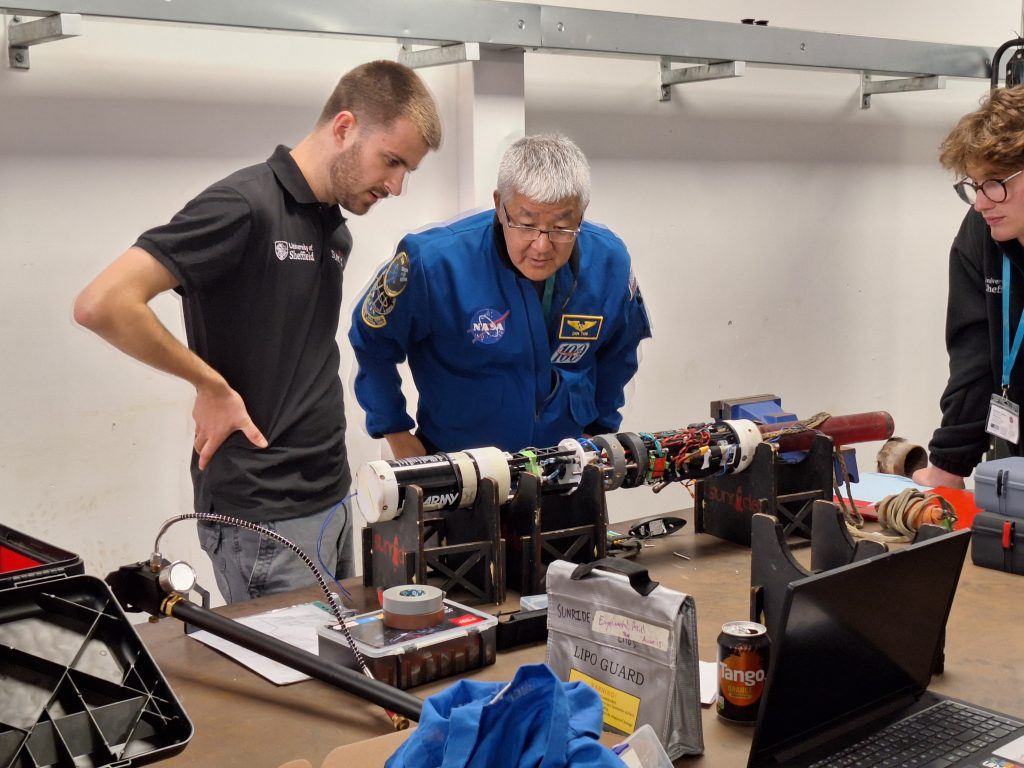
Roll Control System
Ariel’s Roll Control System (RCS) uses compressed air stored in a canister. The air is released through four thrusters controlled by solenoid valves: two generate clockwise torque, and the other two generate counter-clockwise torque.
Here you can see the system being tested, with torque being manually applied to the system. This was done whilst it was on a test stand that left the RCS rotate freely so that its stabalisation effect could be monitored.
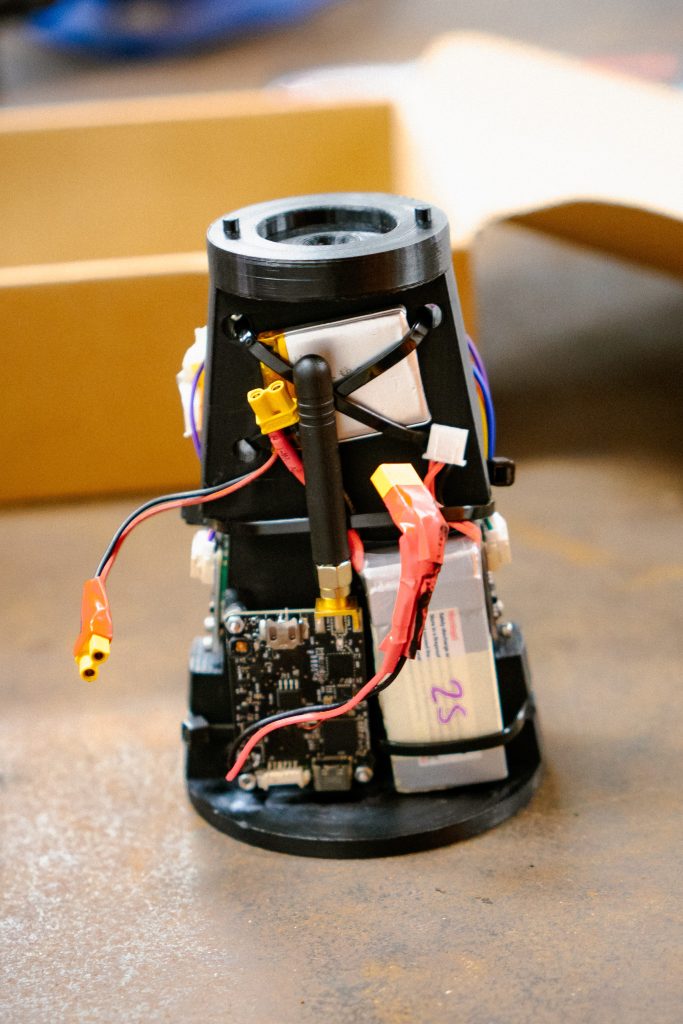
Sunny
Ariel and Sunny were developed by Sunride thanks to the Launch 4 Change programme, funded by the Advanced Research and Innovation Agency. Sunride aimed to show that UV intensity increases with altitude, gathering the necessary data with Sunny. With multiple flights, the data collected could indicate changes in the ozone, producing valuable climate data.
There are two sections of Sunny: the upper section, which holds the two UV sensors (detecting both UVA and UVB rays) positioned behind two UV transparent acrylic windows; and the lower section, which houses the rest of the electronics. This structure allows all of the electronics needed to operate the payload to be housed within the payload whilst remaining within the dimensions of a CanSat.
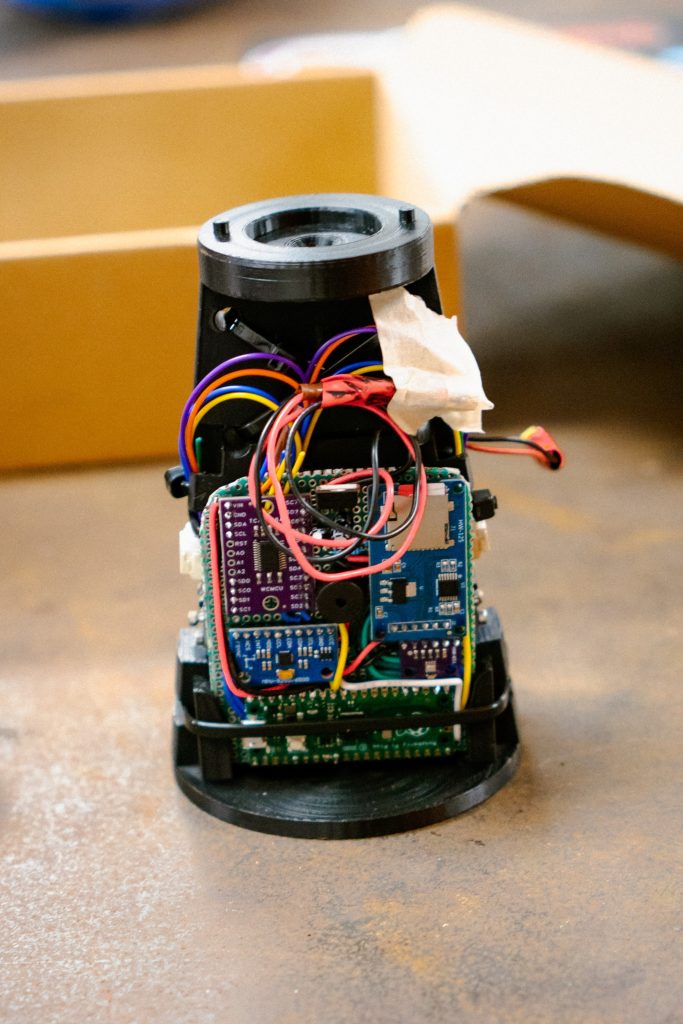
Flight and Recovery Testing
Sustainer Test
6th April 2025
East Anglian Rocketry Society
This test’s main purpose was to validate the recovery system of the sustainer stage. It was a crucial first step before testing Ariel in a more complex two-stage configuration, and then with the RCS and Sunny installed.
Our team achieved their objectives, successfully launching and recovering the sustainer of Ariel!
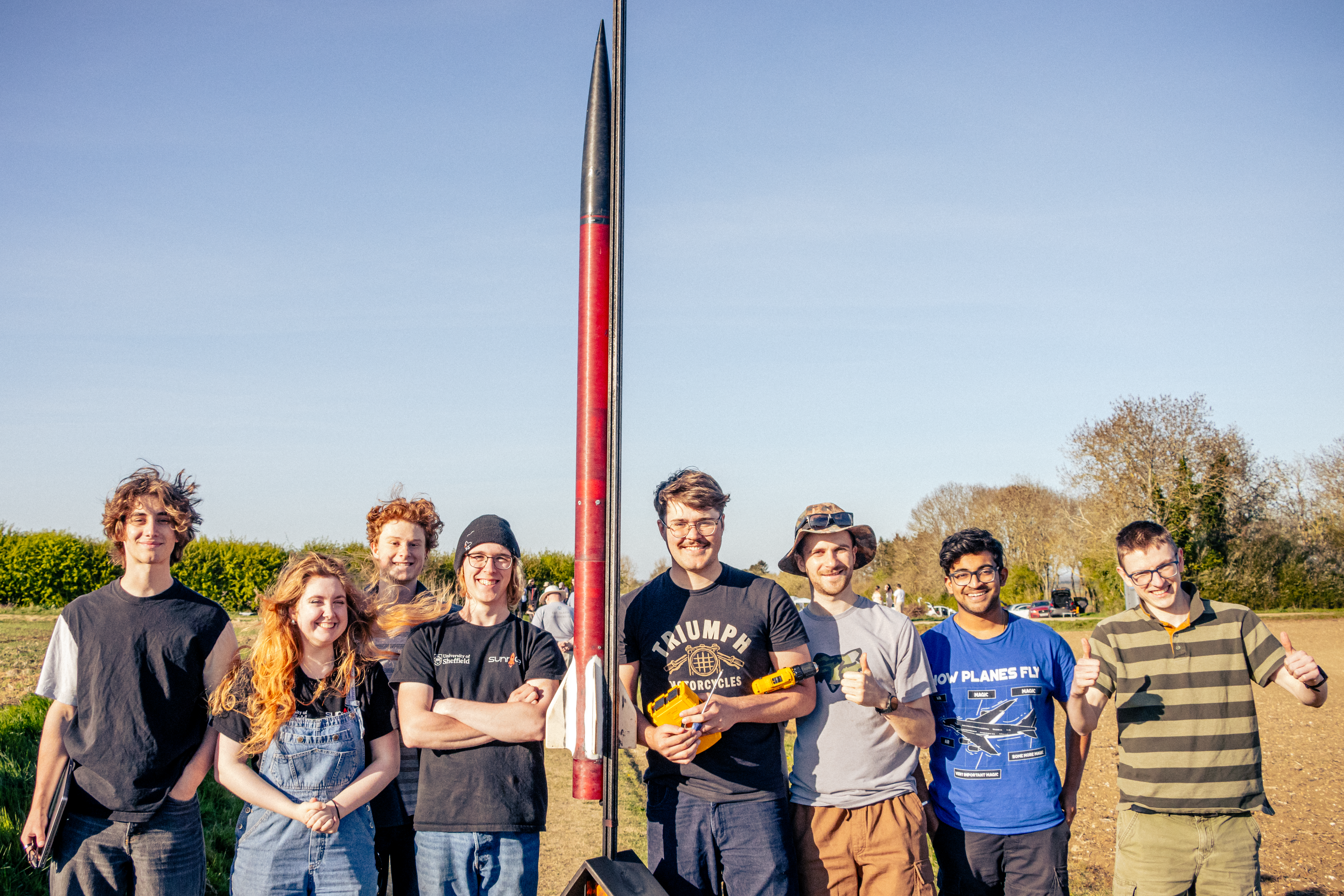
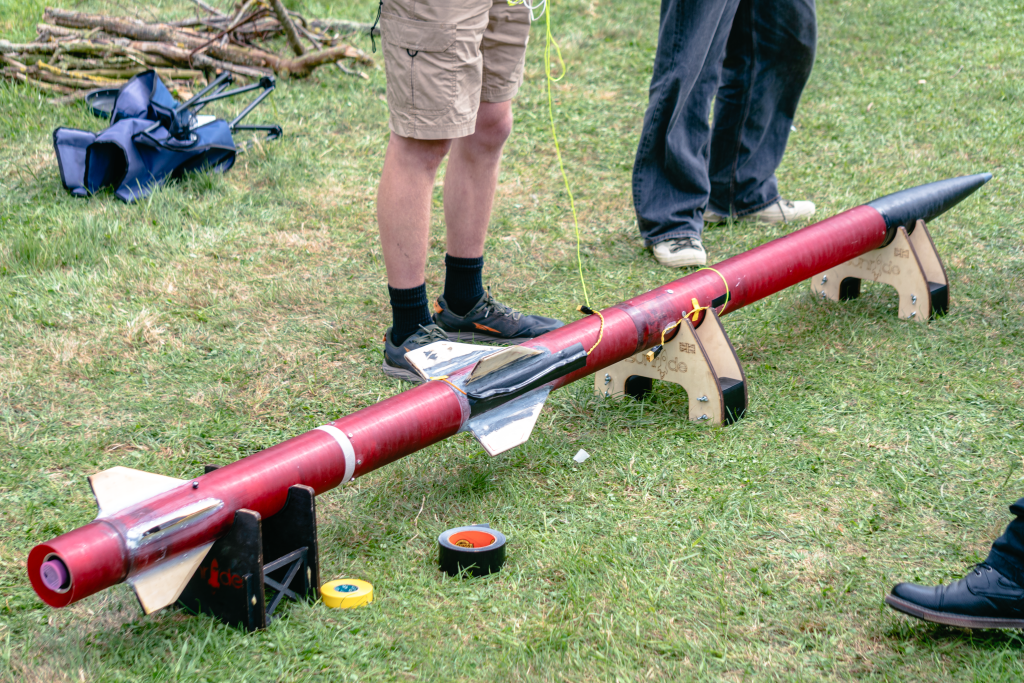
Two-Stage Test
4th May 2025
East Anglian Rocketry Society
One month later, the team completed manufacturing Ariel’s booster. The next goal was to launch and recover the two-stage configuration, and successfully ignite the second stage.
After a successful booster-stage ignition and ascent, the sustainer failed to ignite. The Experimental Series subteam gained valuable lessons learnt in redundancy and fail-safe measures.
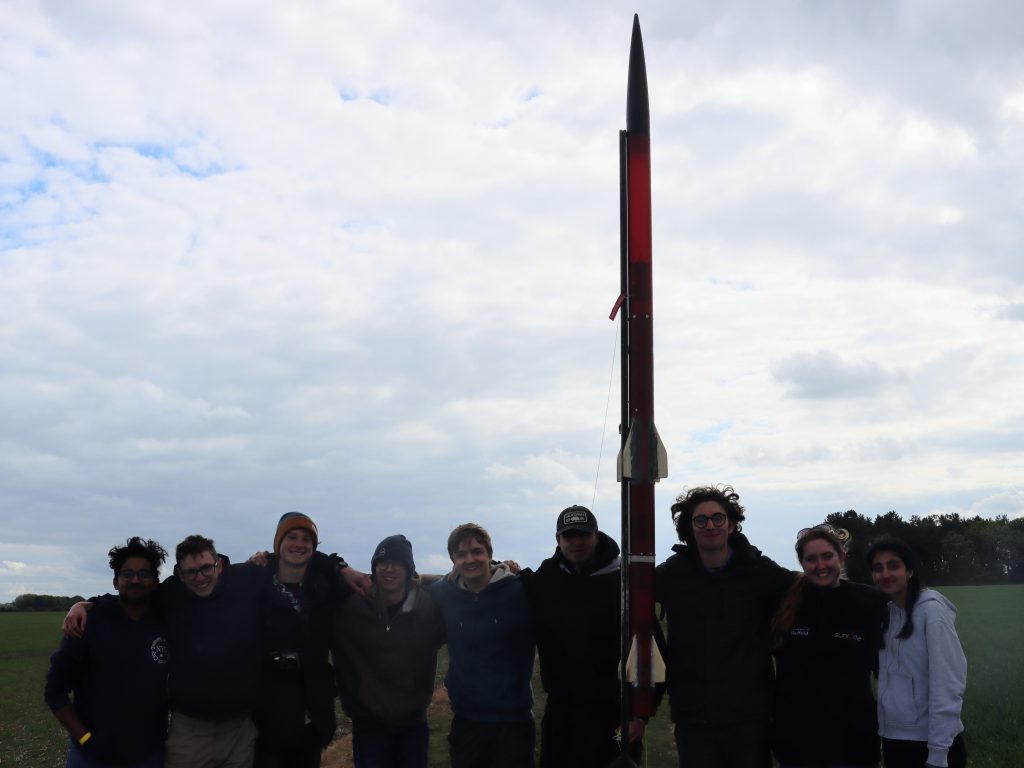
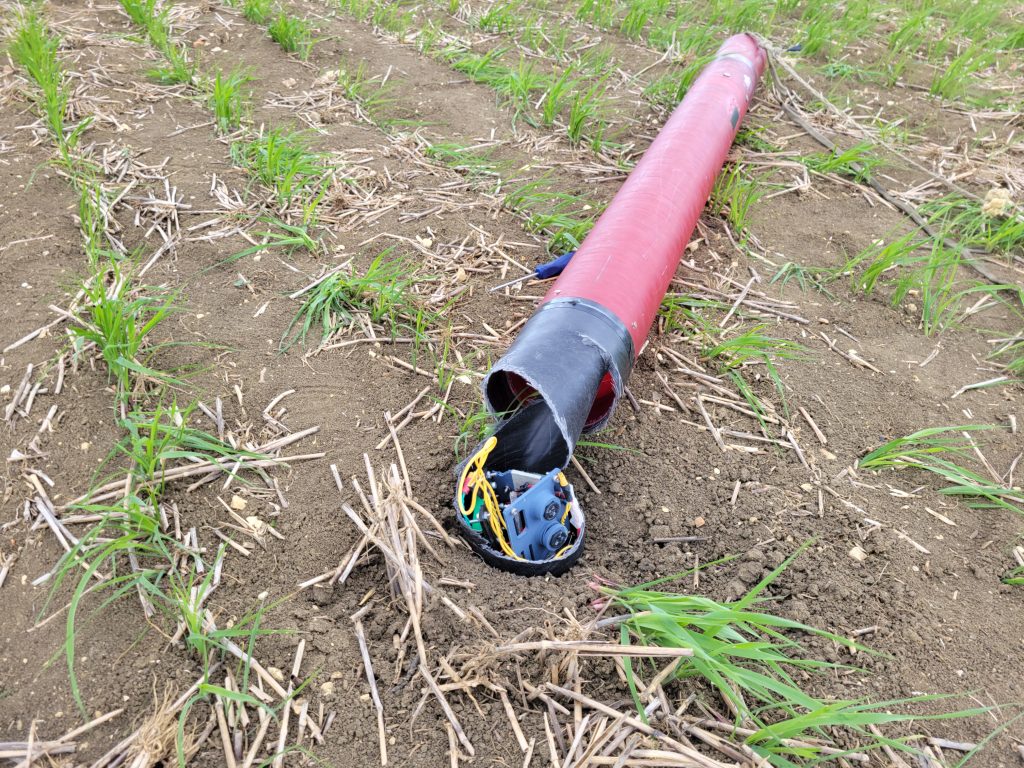
Mach-25 Rocketry Competition
Due to weather issues, like many of the other teams at the competition, Sunride’s Experimental Series subteam were unable to launch Ariel at Mach-25 in July 2025. However, Ariel is due to launch with RCS and research payload, in October 2025.
